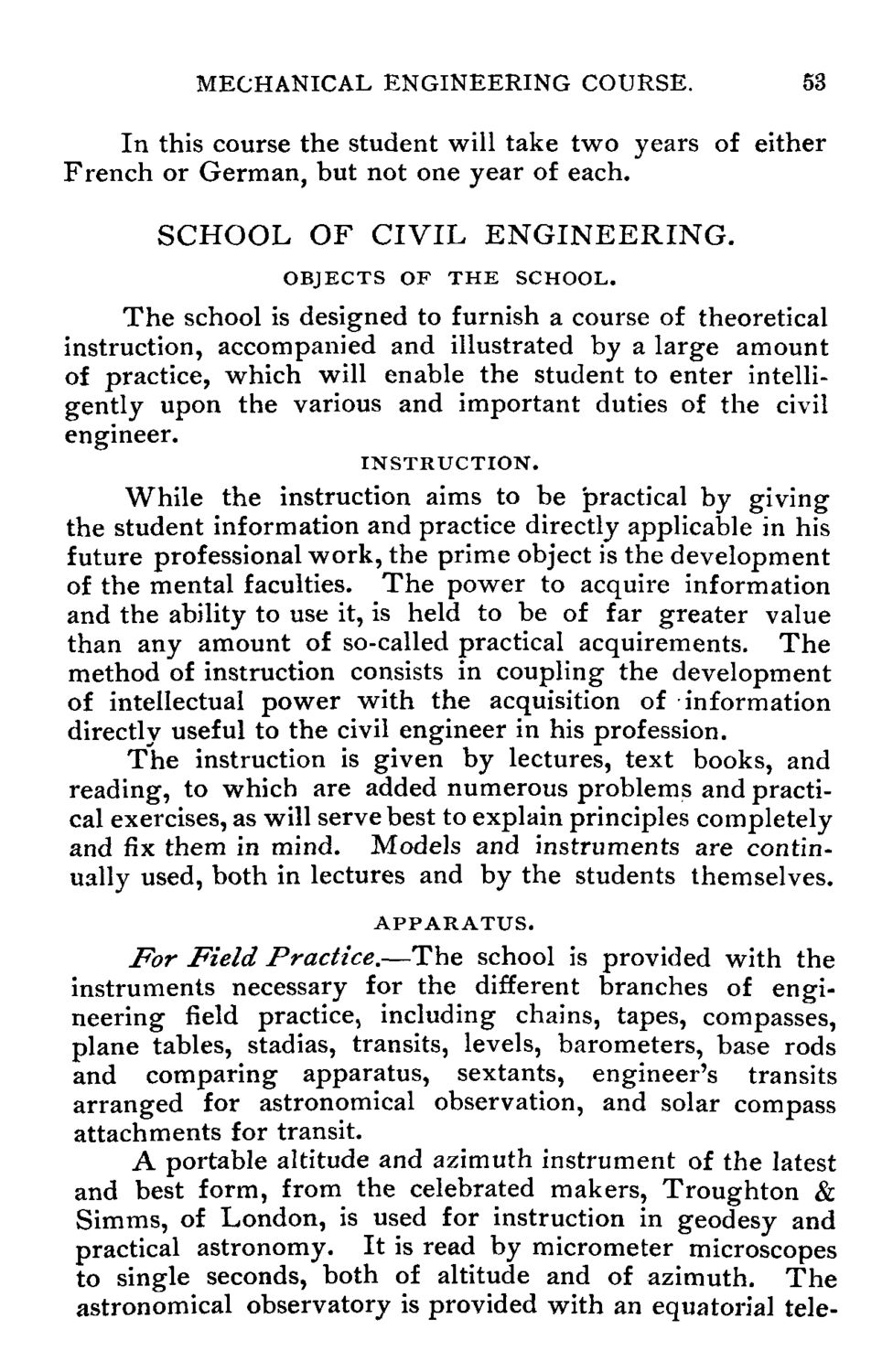| |
| |
Caption: Course Catalog - 1889-1890
This is a reduced-resolution page image for fast online browsing.

EXTRACTED TEXT FROM PAGE:
MECHANICAL ENGINEERING COURSE. 53 In this course the student will take two years of either French or German, but not one year of each. SCHOOL OF CIVIL ENGINEERING. OBJECTS OF THE SCHOOL. The school is designed to furnish a course of theoretical instruction, accompanied and illustrated by a large amount of practice, which will enable the student to enter intelligently upon the various and important duties of the civil engineer. INSTRUCTION. While the instruction aims to be practical by giving the student information and practice directly applicable in his future professional work, the prime object is the development of the mental faculties. The power to acquire information and the ability to use it, is held to be of far greater value than any amount of so-called practical acquirements. The method of instruction consists in coupling the development of intellectual power with the acquisition of information directly useful to the civil engineer in his profession. The instruction is given by lectures, text books, and reading, to which are added numerous problems and practical exercises, as will serve best to explain principles completely and fix them in mind. Models and instruments are continually used, both in lectures and by the students themselves. APPARATUS. For Field Practice.—The school is provided with the instruments necessary for the different branches of engineering field practice, including chains, tapes, compasses, plane tables, stadias, transits, levels, barometers, base rods and comparing apparatus, sextants, engineer's transits arranged for astronomical observation, and solar compass attachments for transit. A portable altitude and azimuth instrument of the latest and best form, from the celebrated makers, Troughton & Simms, of London, is used for instruction in geodesy and practical astronomy. It is read by micrometer microscopes to single seconds, both of altitude and of azimuth. The astronomical observatory is provided with an equatorial tele-
| |